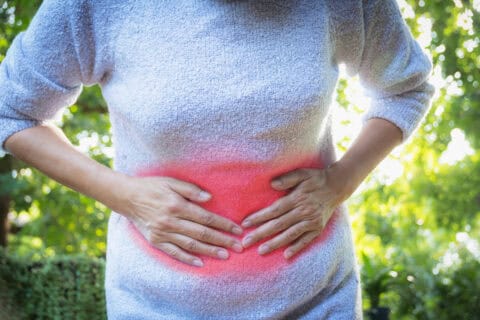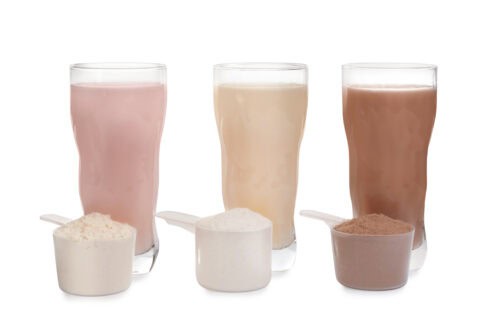Living with chronic digestive issues can be exhausting and overwhelming. If you’ve been struggling with conditions like SIBO, IBD, or other digestive disorders, you may have heard about the elemental diet as a potential solution. This guide will walk you through what the elemental diet is, how it works, and the various health conditions it can help address.
What Is an Elemental Diet?
An elemental diet consists of pre-digested nutrients in their simplest form:
- Amino acids (broken-down proteins)
- Fatty acids (broken-down fats)
- Simple sugars (broken-down carbohydrates)
These nutrients are absorbed in the upper part of the small intestine, which means they don’t require much digestive effort and leave minimal residue for bacteria to feed on further down your digestive tract.
Applications of the Elemental Diet
SIBO Treatment
Small Intestinal Bacterial Overgrowth (SIBO) is a condition where excessive bacteria grow in the small intestine. The elemental diet has shown impressive results for SIBO treatment:
- How it works: The pre-digested nutrients are quickly absorbed in the upper intestine, effectively “starving” the bacteria by reducing their food supply.
- Success rates:
- A 2004 study showed 80% of IBS patients with abnormal breath tests normalized after 14 days
- After an additional week, the success rate increased to 85%
- A more recent trial with a palatable elemental formula showed 100% normalization in SIBO patients and 75% in patients with both SIBO and intestinal methanogen overgrowth
- Comparison to antibiotics: One study demonstrated that a 2-week elemental diet normalized breath tests more effectively than antibiotics (80% vs. 51%)
- Best for: Patients who cannot tolerate antibiotics or haven’t responded to antibiotic treatment
Inflammatory Bowel Disease Management
Elemental diets have been used for decades to manage IBD, particularly Crohn’s disease:
- For inducing remission:
- Exclusive enteral nutrition (EEN) with elemental formulas for 6-8 weeks has been effective
- A Cochrane review found similar remission rates (63.8%) compared to other enteral feeds
- Clinical remission was reported in 71% of Crohn’s disease patients
- For maintenance:
- Partial elemental diets (half daily calories from formula) can reduce relapse rates
- Relapse rate was 34% for patients on partial elemental diet versus 64% for those on normal diet
- Limitations:
- Less clear benefits for ulcerative colitis
- Relapse is common when returning to normal diet
- Poor palatability often requires tube feeding
Eosinophilic Esophagitis Treatment
Eosinophilic Esophagitis (EoE) is an allergic inflammatory condition of the esophagus:
- Efficacy:
- Meta-analyses show histologic remission rates of 90-91%
- 88% of adults experienced symptom relief after four weeks
- Significantly decreases inflammation
- Mechanism: Eliminates food antigens that trigger eosinophilic inflammation
- Challenges:
- Formula intolerance
- High cost
- Social barriers
- Poor taste
Post-Surgical Gut Rest
After gastrointestinal surgeries, elemental diets can be beneficial:
- Provides complete nutrition that’s easily absorbed
- Reduces stress on the healing digestive tract
- Supports early recovery after procedures like laparoscopic colectomy
- Available as commercial formulas for tube feeding
Other Medical Applications
Elemental diets have shown promise for various other conditions:
- Eosinophilic Gastritis/Gastroenteritis: Complete histologic remission in 14 of 15 subjects after 6 weeks
- Chronic Pancreatitis: Pain reduction and clinical improvement, with complete pain resolution in 59% of patients in one study
- Celiac Disease: Potential role in treating refractory celiac disease type 1
- Bile Acid Diarrhea: May reduce fecal bile acid excretion and improve symptoms
- Reduced Aspiration Risk: May lower aspiration pneumonia risk in PEG-fed patients due to faster gastric emptying
- Chemoradiotherapy Support: May help prevent oral mucositis during cancer treatment
Limitations and Considerations
Despite its benefits, several factors limit widespread use of elemental diets:
- Palatability: Many formulas have an unpleasant taste
- Cost: Often expensive and may not be covered by insurance
- Compliance: Difficult to maintain for extended periods
- Social aspects: Challenges of not eating regular meals
- Reintroduction: Carefully planned food reintroduction is often necessary afterward
Conclusion
The elemental diet offers a promising approach for various digestive and inflammatory conditions. While research demonstrates impressive success rates for conditions like SIBO, Crohn’s disease, and eosinophilic esophagitis, it’s important to remember that this is a medical intervention that should be undertaken with proper healthcare guidance.
If you’re considering an elemental diet, discuss with your healthcare provider whether it’s appropriate for your condition, the optimal duration, and how to implement and monitor it effectively. With proper medical supervision, the elemental diet may provide the relief you’ve been seeking from chronic digestive issues.






